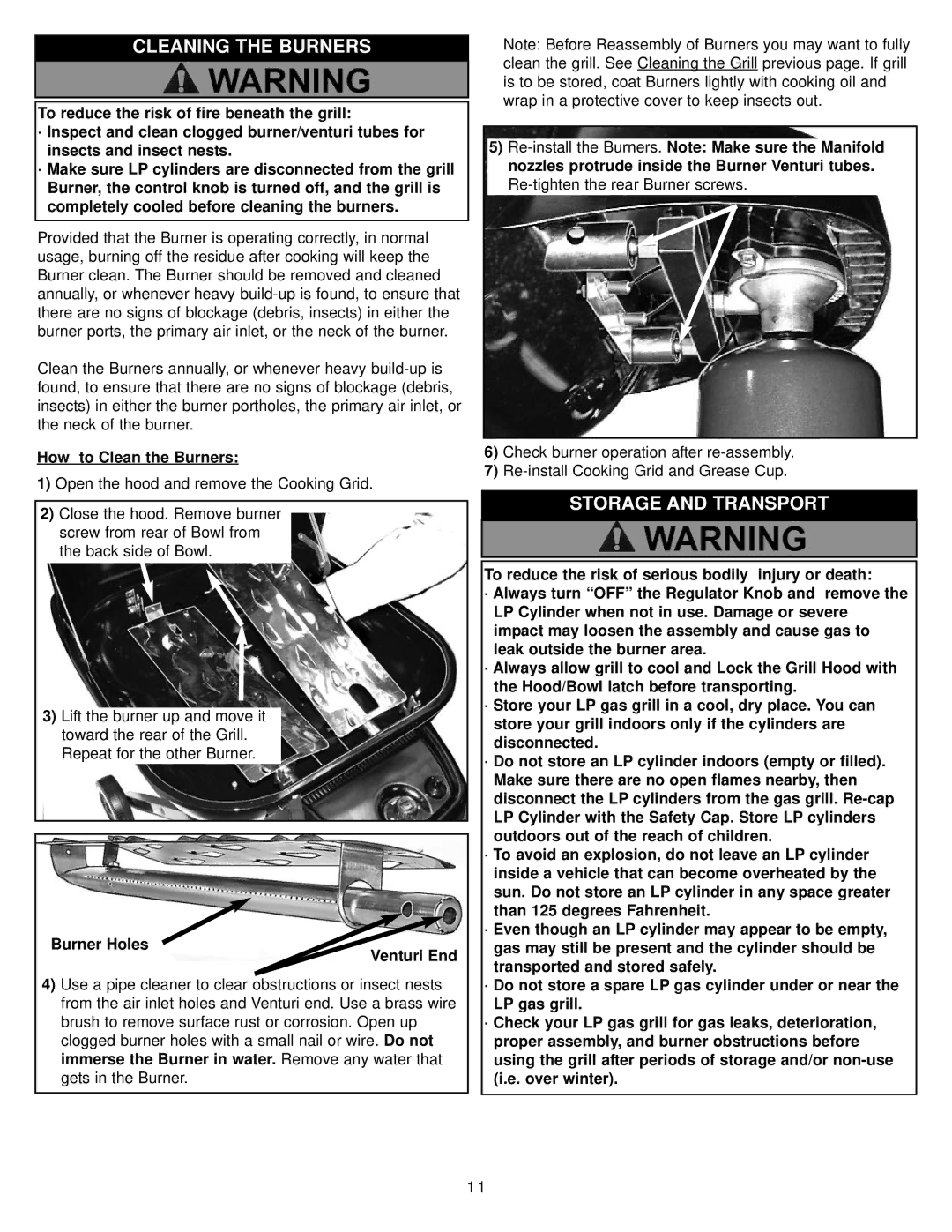
CLEANING THE BURNERS
To reduce the risk of fire beneath the grill:
·Inspect and clean clogged burner/venturi tubes for insects and insect nests.
·Make sure LP cylinders are disconnected from the grill Burner, the control knob is turned off, and the grill is completely cooled before cleaning the burners.
Provided that the Burner is operating correctly, in normal usage, burning off the residue after cooking will keep the Burner clean. The Burner should be removed and cleaned annually, or whenever heavy
Clean the Burners annually, or whenever heavy
How to Clean the Burners:
1)Open the hood and remove the Cooking Grid.
2)Close the hood. Remove burner screw from rear of Bowl from the back side of Bowl.
3)Lift the burner up and move it toward the rear of the Grill. Repeat for the other Burner.
Burner Holes
Venturi End
4)Use a pipe cleaner to clear obstructions or insect nests from the air inlet holes and Venturi end. Use a brass wire brush to remove surface rust or corrosion. Open up clogged burner holes with a small nail or wire. Do not immerse the Burner in water. Remove any water that gets in the Burner.
Note: Before Reassembly of Burners you may want to fully clean the grill. See Cleaning the Grill previous page. If grill is to be stored, coat Burners lightly with cooking oil and wrap in a protective cover to keep insects out.
5)
6)Check burner operation after
7)
STORAGE AND TRANSPORT
To reduce the risk of serious bodily injury or death:
·Always turn “OFF” the Regulator Knob and remove the LP Cylinder when not in use. Damage or severe impact may loosen the assembly and cause gas to leak outside the burner area.
·Always allow grill to cool and Lock the Grill Hood with the Hood/Bowl latch before transporting.
·Store your LP gas grill in a cool, dry place. You can store your grill indoors only if the cylinders are disconnected.
·Do not store an LP cylinder indoors (empty or filled). Make sure there are no open flames nearby, then disconnect the LP cylinders from the gas grill.
·To avoid an explosion, do not leave an LP cylinder inside a vehicle that can become overheated by the sun. Do not store an LP cylinder in any space greater than 125 degrees Fahrenheit.
·Even though an LP cylinder may appear to be empty, gas may still be present and the cylinder should be transported and stored safely.
·Do not store a spare LP gas cylinder under or near the LP gas grill.
·Check your LP gas grill for gas leaks, deterioration, proper assembly, and burner obstructions before using the grill after periods of storage and/or
11
